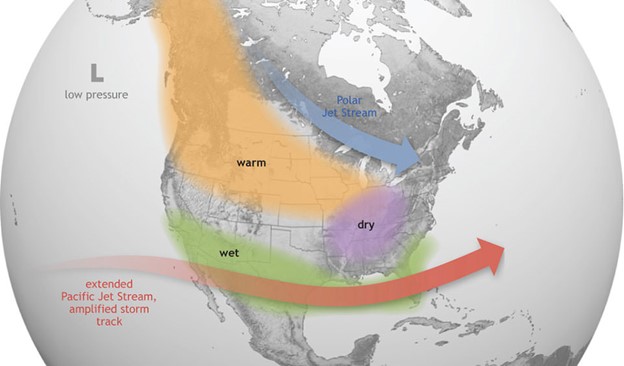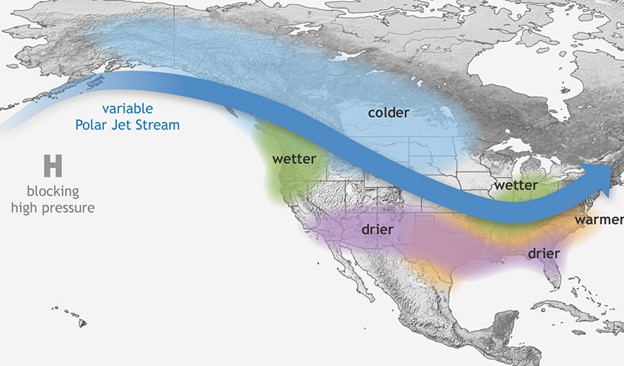
Dileep Prabhakar
Regional Sales Director
Freedom Energy
Published: December 15, 2023
El Niño and La Niña: Key Drivers of Weather and Energy Dynamics
In our previous discussions, we explored short-term weather phenomena like hurricanes and their impact on energy. This time, our focus shifts to the longer-term phenomena influenced by the Pacific equatorial waters, notably El Niño and La Niña. These weather cycles are closely monitored by various sectors, including agriculture, travel, public works, and energy, for clues on their potential weather influence.
The Origins and Nature of El Niño and La Niña
Originating from Spanish terms meaning ‘the Little Boy’ and ‘the Little Girl’ with religious connotations, these patterns were first observed by fishermen in the 1600s. They noticed temperature fluctuations in the equatorial waters near South America around Christmas.
The warm (El Niño) or cold (La Niña) patterns are influenced by trade winds. When these winds weaken, warm water accumulates east towards the Americas. Conversely, strong trade winds push warm water away, allowing colder water pockets to emerge, forming La Niña. When neither pattern is active, the condition is considered neutral.
Seasonal Influence and Energy Impact
These patterns have long term seasonal influence on weather but is just one of many factors that determine winter and summer weather patterns-though the influence is much stronger in the winter. So what potential impact does this have on energy? Since we are nearly into winter, this article will focus on those impacts.
El Niño’s Influence on Energy
El Nino winters results in a more southern Jet Stream per Figure One below. There would typically be limited polar intrusions due to a steady and southern jet stream flow. Of course, as in any winter, the Jet Stream wobbles and cold pockets will be brought down to the lower continental latitudes-but they tend to be weaker and less of them.
Warmer conditions, particularly in the mountain states, lead to a reduction in heating demand. The Northern US from coast to coast will in general be warmer due to Jet Stream influence, limiting heating demand. The Southern US tends to be wetter in El Nino years with more storms and near normal temperatures. In a typical El Nino winter, there is less electricity and natural gas demand nationwide.

La Niña’s Energy Dynamics
La Nina Years usually means a wet western part of the US where the rain off the pacific is very active per Figure 2 below. The Jet Stream pushes North allowing many intrusions of cold weather in the Northern States east of the Rockies. The Northern plains tend to be well below normal while the northeast states tend to be slightly below normal.
The entire northern part of the country tends to be wetter with more snow. The southern states typically are drier and warmer limiting heating and electricity demands, but not enough to offset the cold, snowy pattern in the heating demand states. Typically, because the heating demand regions are cold, there is more electricity and natural gas demand nationwide.

Recapping Last Winter’s La Niña
Last winter (January-March 2023) saw a strong La Niña pattern. They can and should be used as guidance for a typical pattern, but certainly not the be all end all. The West held the typical pattern with record flooding rains along the coast, and record snow fall in the Sierra Nevada and Rocky Mountains.
The East Coast though went against the pattern. It was one of the, if not the warmest winters on record. Less than an inch of snow was recorded in both Philadelphia and New York City, while Boston only had slightly more. Temperatures were spring like virtually the entire winter-save for a brief arctic blast in early February. Because the East Coast population centers had scant heating demands, energy demand and prices cratered last winter against the typical pattern.
What About This Winter?
The script has flipped from last winter to an El Nino. We would expect warmer weather throughout most of the continent this winter, dropping heating demand and energy prices. As the climate has taught us though, it’s certainly not an exact science.
Freedom Energy is Here to Assist You
For more detailed insights and tailored energy strategies in light of these climatic patterns, connect with our experts. Stay ahead in managing your energy needs by understanding the intricate relationship between climatic phenomena and energy demand.





Connect With Us